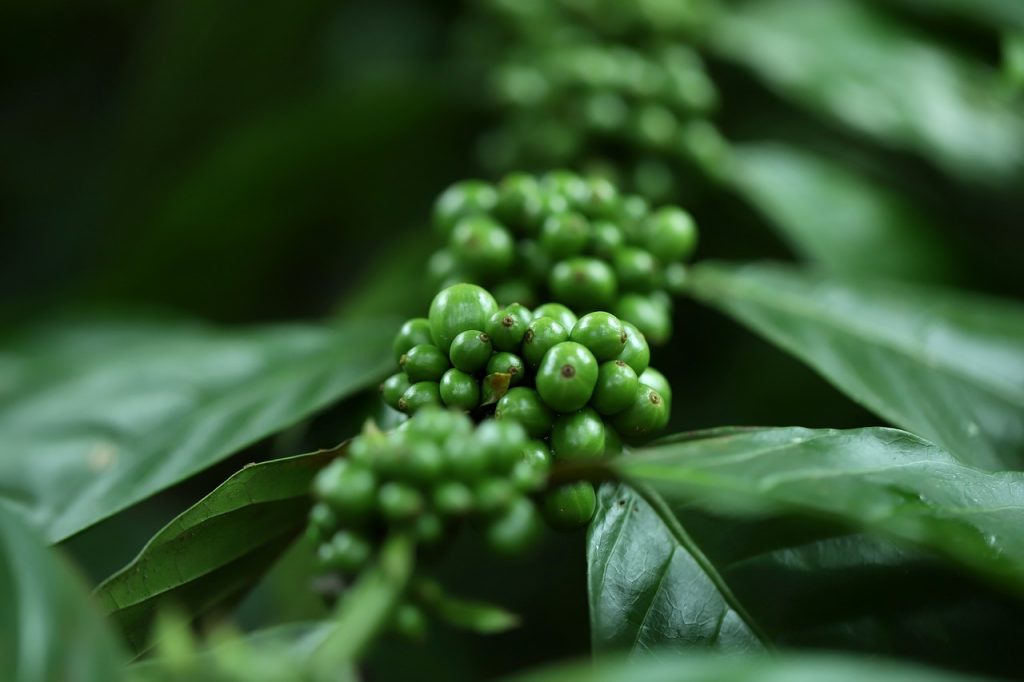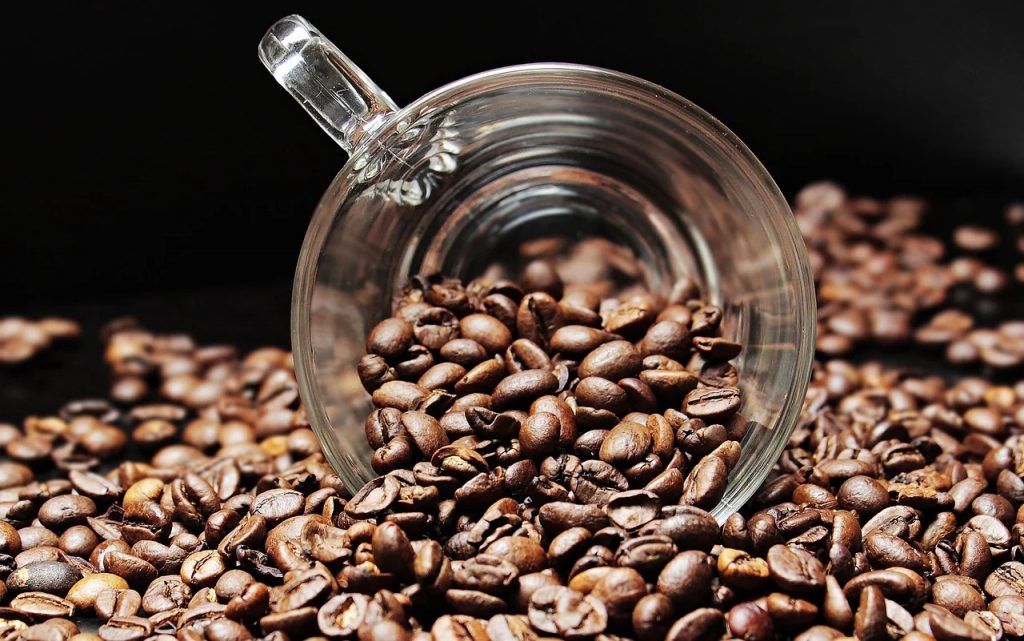Where Do Coffee Beans Come From?
Discover the history of coffee and where most of it is produced today.
This article is more than 2 years old

Where do your coffee beans come from? Look, at this point, coffee is the world’s beverage, and it is no secret that here in the United States we have a love affair with it. If you’ve ever been to a major city, you’re sure to see a Starbucks on nearly every corner and you’d be hard-pressed to find a home without a coffee maker. To further prove our adoration for the beloved beverage, statistics reveal that 64 percent of Americans drink coffee daily, which equates to approximately 150 million people.
Those 150 million people consume a combined 400 million cups every day, amounting to a whopping 140 billion cups being drunk each year. Needless to say, we love our coffee. However, did you ever stop to think how we, as a species, came to be so infatuated with the beverage? Or even where do our coffee beans come from?
We decided to take a deep dive into coffee’s history, explore its ancient roots, uncover where the coveted beans are mostly grown today, and perhaps, recommend a few places to purchase that ever-so-comforting cup of Joe.
COFFEE IS THOUGHT TO HAVE BEEN DISCOVERED IN THE 9TH CENTURY

Coffee’s long history is largely rooted in lore. Legend has it that it was first discovered on accident by an Ethiopian goat herder named Kaldi sometime during the 9th century. The story goes that while out to pasture with his goats, Kaldi noticed that they were eating curious-looking berries from an odd type of tree and that after consuming the “berries” his goats suddenly became noticeably more energetic.
In fact, Kaldi observed that the odd berries’ energizing effects lasted through the night, preventing his goats from even going to sleep. Convinced that he had inadvertently stumbled onto a pretty significant discovery, Kaldi detailed his observations to a monk at his village’s local monastery. It is said that from there the Monks spread the word about what would come to be known as the coffee bean.
WHERE DO COFFEE BEANS COME FROM? THE FIRST DOCUMENTED ACCOUNT WAS IN THE 15TH CENTURY
The first documented accounts of coffee were recorded sometime during the 15th century. Early accounts detail it being grown in the Yemeni district of Arabia. By the 16th century, there was evidence of the beans being cultivated in Persia, Egypt, Syria, and Turkey. By this time, it is clear that people were consuming it as a beverage, but there is no direct evidence that shows exactly when people figured out how to turn the beans into a drink.
By the 17th century, the beans had found their way to Europe, and coffee houses began to crop up in prominent cities throughout parts of England, Austria, France, Germany, and Holland. It was during this time that coffee became the preferred breakfast beverage, as it began replacing, believe it or not, beer and wine, which were the drinks that were previously often enjoyed in the morning.
During the 1700s, coffee found its way to the new world by way of New Amsterdam, which later became New York City. Ironically, today, New Yorkers are said to drink seven times the amount of coffee in comparison to other major cities across the United States.
Coffee also found its way to South America during the 1700s, when navel officer and explorer Gabriel de Clieu brought a seedling he had received from King Louis XIV on a voyage to the French island of Martinique in the Caribbean. Approximately 50 years later, coffee spread wildly throughout the Caribbean, South America, and Central America. Today these regions are some of the largest producers of coffee in the world.
COFFEE TODAY

Today, coffee is produced worldwide. However, there are a few key players in the coffee-growing industry that output more beans than any other country. Brazil is leading the pack in terms of coffee production. Brazil outputs over 2,592,000 metric tons, which equates to well over 5 billion pounds of beans each year. It is widely known for growing the coveted Arabica beans, and nearly 27,000 square kilometers of the country is comprised of plantations solely dedicated to growing coffee.
Vietnam comes in at a distant second, although its coffee production numbers are still impressive, especially given the size of Vietnam compared to Brazil. Vietnam produces 1,650,000 metric tons or over 3 billion pounds of coffee every year. Colombia sits in third place, and rightfully so being that their coffee is well known worldwide for being top-notch quality. This South American country produces roughly 810,00 metric tons or over 1 billion pounds of beans year over year.
Here in the United States, popular coffee chains like Starbucks and Dunkin get their beans largely from Latin America. Starbucks sources most of its beans from Colombia and Brazil. Dunkin‘s beans come from a wider palate of South American countries and they frequently purchase beans from Brazil, Colombia, El Salvador, Guatemala, Honduras, Mexico, Nicaragua, and Peru. McDonald’s, which is also well known for making a quality cup of Joe, also gets its beans primarily from Colombia and Brazil.
COMPANIES LIKE LARRY’S COFFEE WORK DIRECTLY WITH LOCAL FARMERS

Unfortunately, because coffee is such a popular commodity, oftentimes the people involved in the business of cultivating it can be ruthless. In recent years, information has come out exposing the brutal treatment of those harvesting the beans.
Many have also been shining a light on the use of child labor and other forms of labor exploitation that have been taking place within the coffee production industry. Additionally, new information has exposed the widespread use of dangerous agrochemicals that are being utilized on a staggering number of plantations. These reasons highlight the importance of making sure that the coffee you are consuming comes from a sustainable and trusted source.
While you as the consumer don’t have much control over where coffee beans come from when you buy coffee at a coffee shop or restaurant, you do have control over where you purchase the coffee you brew at home. A website dedicated to researching companies committed to sustainability put out a list of 11 different options where you can purchase coffee that has been thoroughly vetted so you can maintain peace of mind while you savor your steaming cup.
Some of the companies that stand out include Larry’s Coffee, Tiny Footprint Coffee, and Volcanica Coffee. Larry’s Coffee works directly with local farmers to ensure quality, as well as to make sure they can pay their farmers a fair wage. Tiny Footprint Coffee is committed to producing carbon-negative coffee beans to negate any harmful environmental impacts, and Volcanica Coffee donates a percentage of all its proceeds to charities committed to providing safe and clean drinking water worldwide to those who need it.

Undoubtedly, Coffee is an important part of global culture and it has clearly demonstrated that through its rich and lengthy history. The next time you drive to your local shop, take a moment to reflect on how far it has come from its humble origins, and perhaps before you purchase your next bag of beans, look at companies that are committed to both quality and sustainability.





